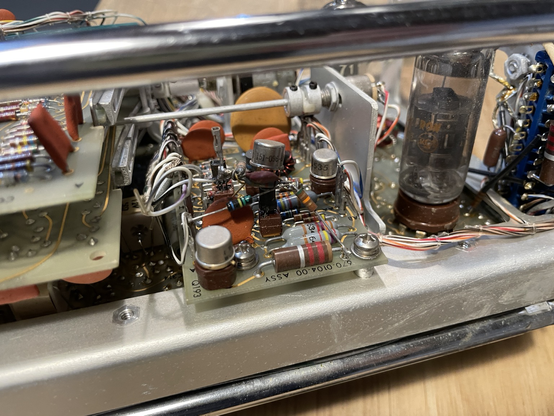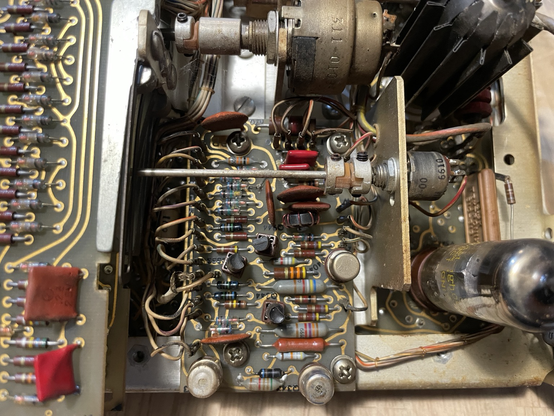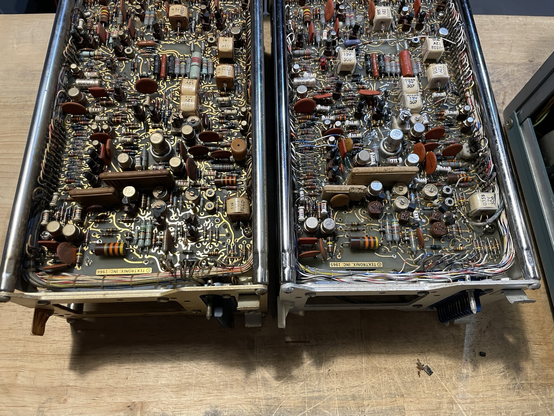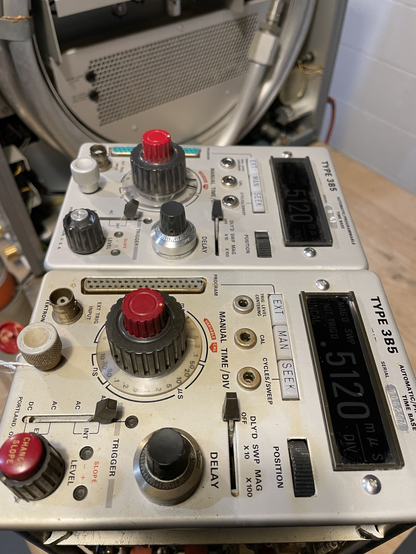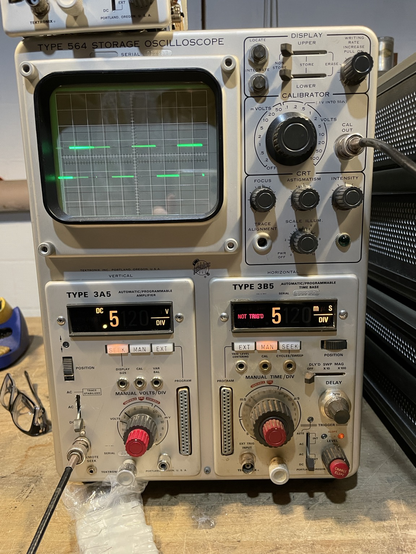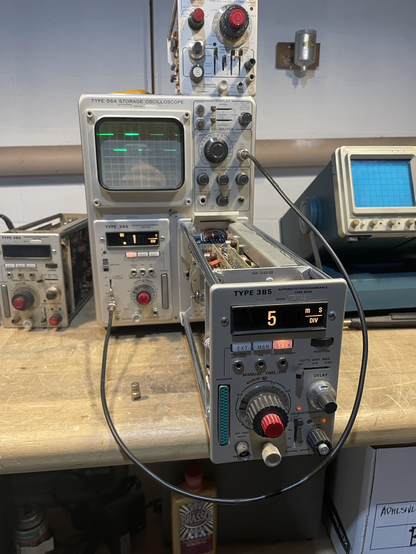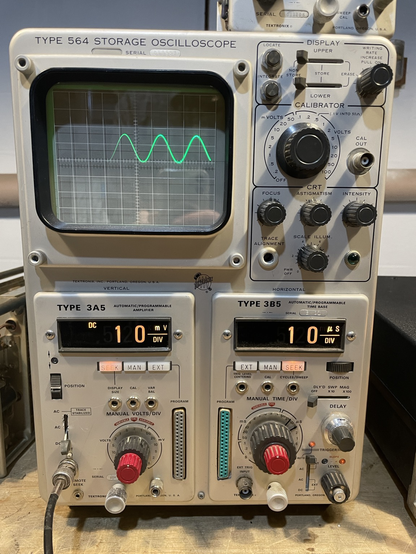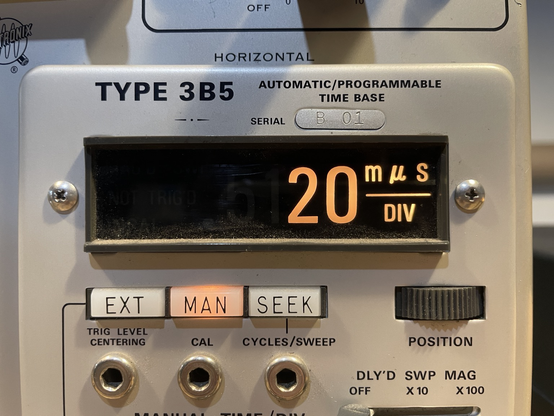2/ One of the curiosities on the prototype of this #tektronix plug-in is the elapsed time meter on the bottom. It is not present on the production unit. There is a note that I cannot decipher with a date or February 16 1966.
This type of indicator is a Mercury Coulometer, and shows time elapsed using a chemical reaction which moves a drop of mercury in a capillary tube slowly and linearly as chemical reaction is caused by the passage of a small, fixed current.
This unit has a large number of reed relays, which have a finite lifespan, and I wonder if this meter was there to measure usage during testing.
This type of indicator is a Mercury Coulometer, and shows time elapsed using a chemical reaction which moves a drop of mercury in a capillary tube slowly and linearly as chemical reaction is caused by the passage of a small, fixed current.
This unit has a large number of reed relays, which have a finite lifespan, and I wonder if this meter was there to measure usage during testing.


